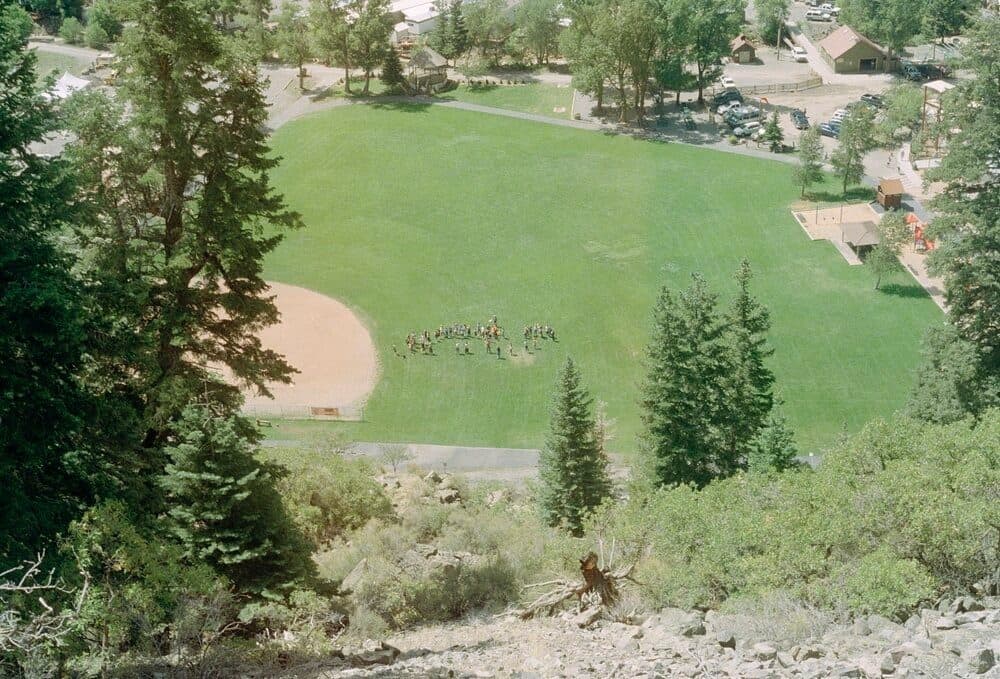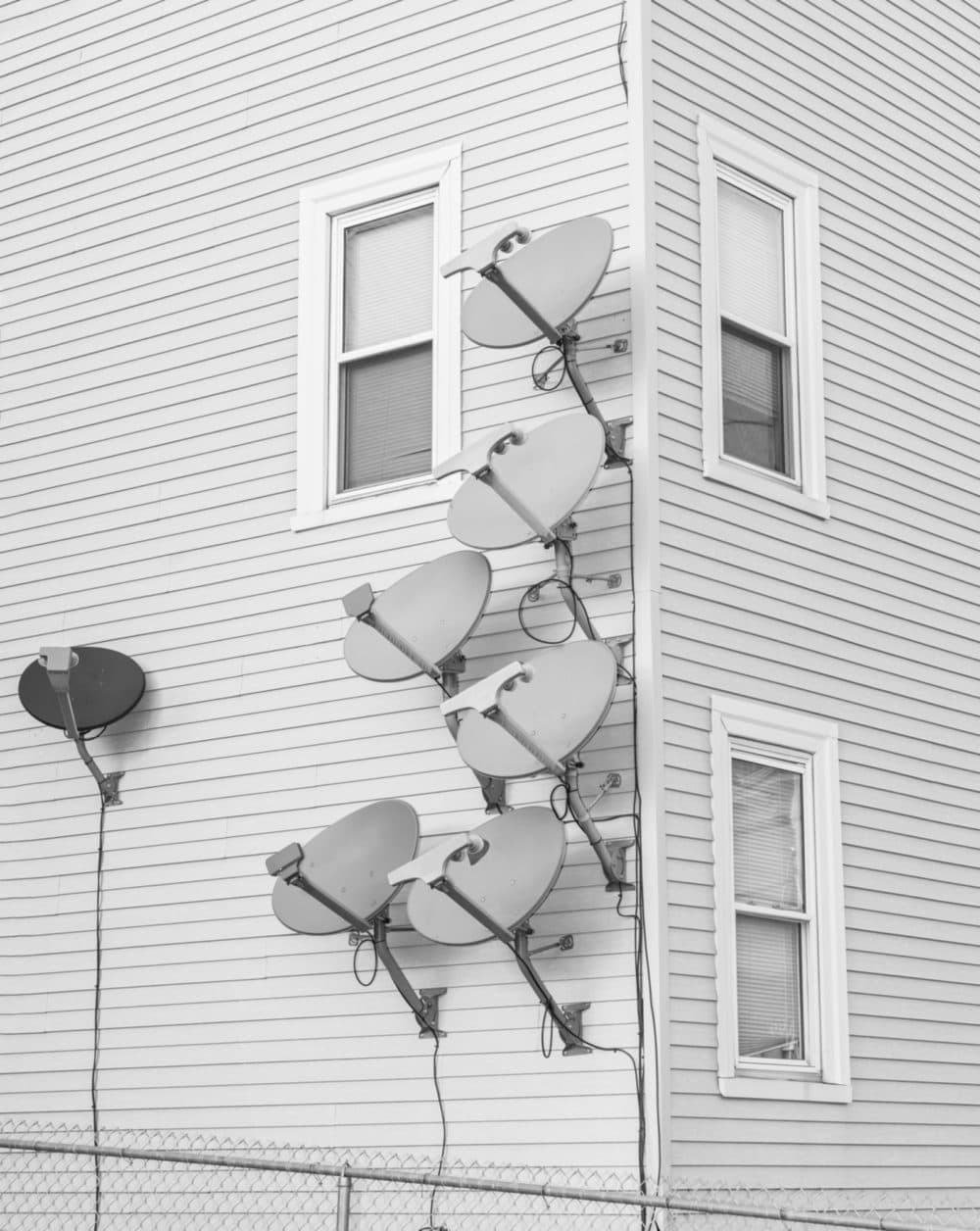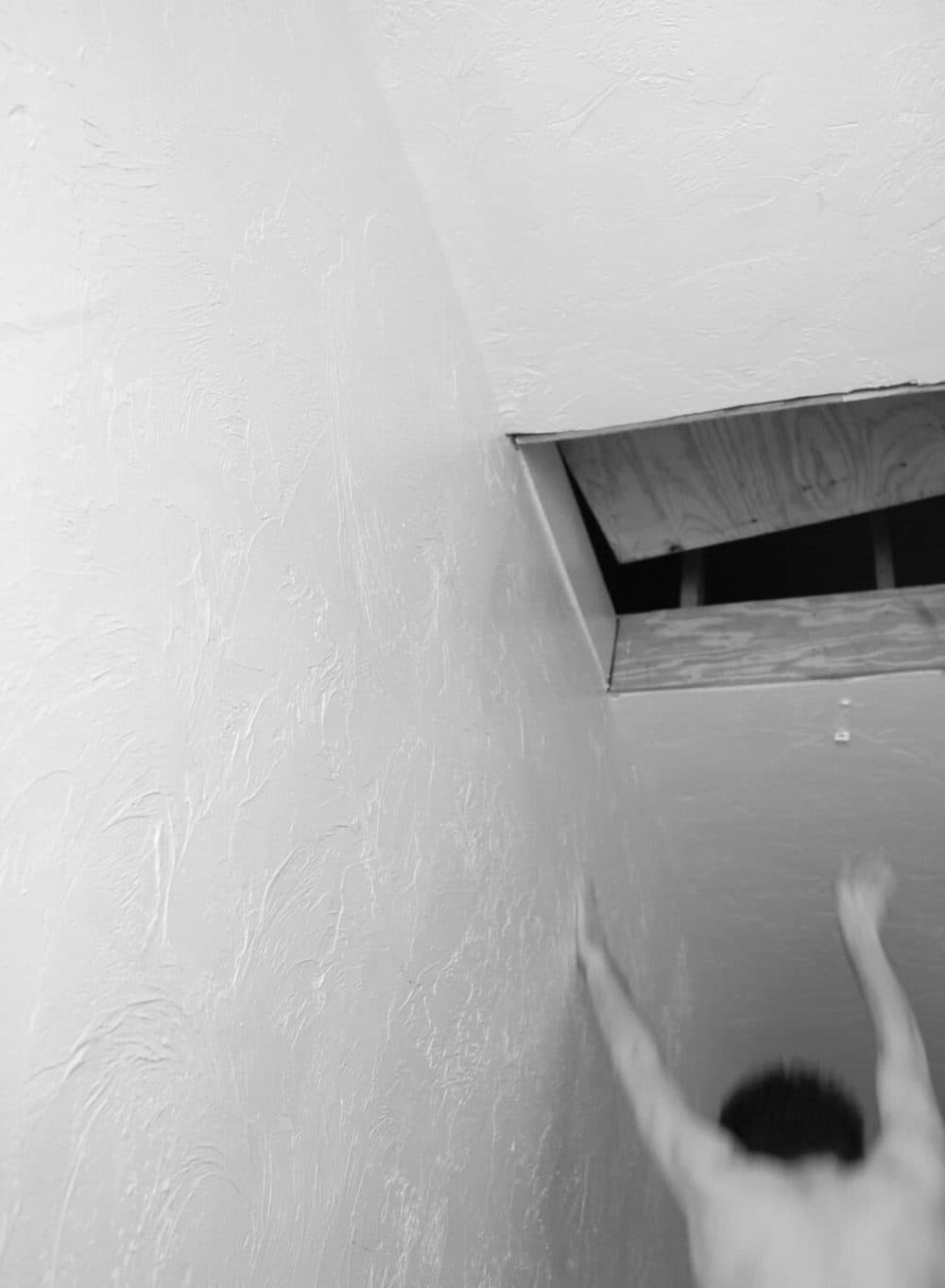Advertisement
In Virtual Exhibition ‘Two Eternities,’ Artists Face Isolation Head On
The internet is now filled with a plethora of inspiring content, curated to distract and entertain despite current circumstances. However, it’s equally important to discuss the full range of emotions brought on by quarantine—uncertainty, introspection, loneliness, malaise.
Re-Direct Gallery, a virtual exhibition space hosted by Belmont-based artist and curator Brittany Smith, allows artists a platform to creatively explore the intricacies of isolation and its effects on a person’s psyche—the good, the bad, the uncomfortable. In “Two Eternities,” the gallery’s second exhibition, 23 artists depict the shared anxieties, fears, and personal revelations that result from periods of immense solitude, coronavirus-related or otherwise.
Without catastrophizing or feigning positivity, the exhibition questions: What does isolation reveal about the human condition? What can we learn about ourselves when separated from the outside world? “Through imposed quarantine, our interiors become projection spaces for our deepest delusions,” Smith explains, “In this time of collective fear, isolation, and malaise, how do we as artists navigate the eternal world through the mirror of our internal world?”
The scope of the show—with over 40 slowly scrolling photographs, collages, and videos—underlies just how many individuals share this unprecedented experience and the wave of emotions that come with it.

As interdisciplinary artist Bella Steele comments in “The Magic Circle”, a photograph with voiceover narration, we are all currently united by some degree of commonality—stuck at home, oftentimes without those closest to us, although some face the added pressures of unemployment and financial hardship. Steele likens the CDC-recommended social distancing measures we must follow to a “magic circle”—the set of rules and actions agreed upon by participants in a card game, one we’re all playing despite anticipating to or not. “The magic circle exists as a different set of shared behaviors. It is a shift in awareness by participants,” she commentates, “We are experiencing the largest, most indefinite magic circle.” While isolation fosters an individualistic mindset, it is crucial to remember the virus’s worldwide impact is far larger than oneself.
Works such as Steele’s were clearly made in response to the current state of affairs (the gallery accepted art between March 17-31) whereas others allude to its more common symptoms: loneliness, depression, boredom.
Advertisement
Many artworks in “Two Eternities” evoke the visual vocabulary of Coronavirus: bedroom-dwellers gazing out windows and dreaming of the outdoors, empty streets, friends playing in parks standing roughly 6 feet apart (which now inevitably reads as a precautionary measure, even in photographs of pre-social-distancing times).

Beyond the expected, “Two Eternities” also captures the more subtle side-effects of lockdown, such as the immense uptick of online gaming and streaming to pass the time—mindless media we consume in hoards to fill a void. Without the presence of people, the physical detritus of these technologies feels haunting, like the first sign of apocalyptic abandon. In Evan Perkins’s photograph “Untitled (Satellite Dishes),” satellite dishes appear as stand-ins for wifi-dependent humans indoors, whose only connection to the outside world is through the internet. Perkins’s symbolic replacement of people with technology visualizes the human tolls of the coronavirus: distance from our loved ones, a lack of physical touch, and disruption to communities that rely on meeting in person, such as religious groups and sobriety support groups.

The artworks in “Two Eternities” embrace unease. A series of photographs by William Barriteau confuses up with down, as if the world is scrambled pictorially as well as practically. “Attic” depicts a person suspended in time; it is unclear if they are falling through a hole in the ceiling or climbing up through it (I ask a similar question on week 3 of my own quarantine: Am I nearing the end of this, or only at the beginning?).
While the photographs are disorienting, there is peace in realizing others share in that discomfort. Nobody knows how to navigate a pandemic such as this; it is OK to admit the finish line isn’t clear. The images in “Two Eternities” may not be poster-child symbols of unwavering positivity, but they are nonetheless reassuring.
It is vital to create venues for expressing the positive as well as the negative impacts of this tumultuous time. “Two Eternities” proves that it’s possible to frankly discuss the nuances of isolation and solitude in the age of the coronavirus, to examine all its implications, while still offering some shade of hope. We are all forced to reckon with parts of our lives that are undergoing immeasurable emotional, interpersonal, or financial distress. But when seeing how communal this experience is, it makes the worries feel a little smaller, more manageable.
"Two Eternities" is on view online at Re-Direct Gallery through May 1.